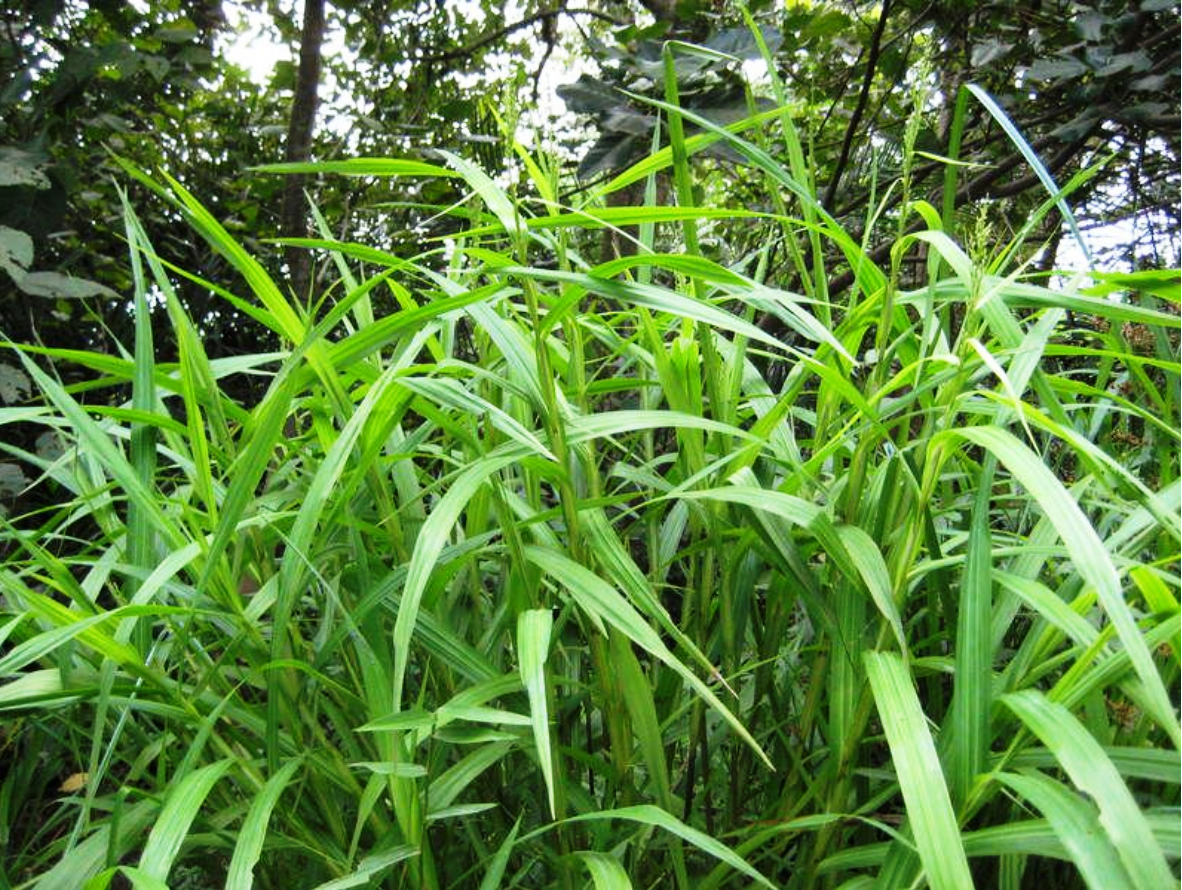Scleria depressa

|
|
Scleria depressa Common Names: Sword Grass, Depressed Nutrush Scientific
Classification Kingdom: Plantae Phylum: Tracheophyta Class: Magnoliopsida Order: Gentianales Family: Rubiaceae Genus: Scleria Species: S. depressa Synonyms: Scleria racemosa var. depressa C.B.Clarke, Scleria racemosa subsp. depressa (C.B.Clarke) J.Raynal Morphological Description Scleria depressa is a perennial sedge within the Cyperaceae family, typically
growing 1–2 m tall, though it can vary from 30 cm to over 2 m depending on
conditions. Its key features include: · Stem: Triangular, erect, smooth or slightly scabrous, forming
dense clumps · Leaves: Linear, 20–50 cm long, 3–8 mm wide, with rough, serrated
margins · Inflorescence: Terminal or axillary clusters of spikelets, ranging from
1–10 spikelets, each 4–6 mm long, reddish-brown to dark brown · Fruit: Small, hard, white nutlets, 1–2 mm in diameter, enclosed in
a persistent perigynium Distribution and Habitat Scleria depressa is predominantly found in tropical Africa, with records from
Senegal, Gambia, Mali, Nigeria, and Ghana, extending to parts of Central and
East Africa. It thrives in: · Ecosystems: Swamps, wetlands, savanna edges, and disturbed open areas · Soils: Moist, light-textured, acidic to neutral (pH 4.5–7.0) · Climate: Tropical, with rainfall of 800–2,000 mm annually and
temperatures of 20–35°C It tolerates seasonal flooding
and is a pioneer species in degraded lands (Burkill, 1985). Ethnopharmacology Scleria depressa is a lesser-known medicinal plant traditionally
used in some African and Asian communities for its anti-inflammatory,
antimicrobial, and diuretic properties. Though not extensively studied, the
plant is typically employed in traditional medicine to treat conditions such as
fevers, urinary tract infections, stomach disorders, and skin infections.
Decoctions of the leaves or roots are sometimes used to manage pain and promote
wound healing. Preliminary phytochemical screenings of related Scleria species
have revealed the presence of flavonoids, alkaloids, tannins, and saponins,
which likely contribute to its medicinal properties. However, specific
pharmacological studies on Scleria depressa are limited, and more scientific
investigation is needed to validate its traditional uses and understand its
active compounds. · Anti-inflammatory: In Sierra Leone, leaf decoctions of
Scleria species treat inflammation. · Antimicrobial: In Nigeria, crushed leaves of Scleria spp. are applied to
wounds. · Diuretic: In Mali, root infusions are used as diuretics; no direct
studies on S. depressa,
but genus-wide ethnobotanical use suggests bioactive compounds (Burkill, 1985). · Fever Relief: In Gambia, aerial parts are boiled for fever;
anti-inflammatory properties may contribute (Dalziel, 1937). ⚠ Toxicity Profile: No specific toxicity data exists for Scleria depressa. Most Scleria species are not highly toxic, but
caution is advised due to limited studies. Excessive use may cause mild
gastrointestinal upset based on anecdotal reports (Burkill, 1985). Additional Uses · Ecological: Stabilizes wetland soils and prevents erosion (Nelmes,
1956). · Cultural: In Guinea, leaves are used as cutting tools due to their
sharpness (Burkill, 1985). · Fodder: Young shoots are grazed by livestock in Senegal (Dalziel,
1937). References
External Links More Pictures |
|
| Compounds of Scleria depressa |
|
| References |